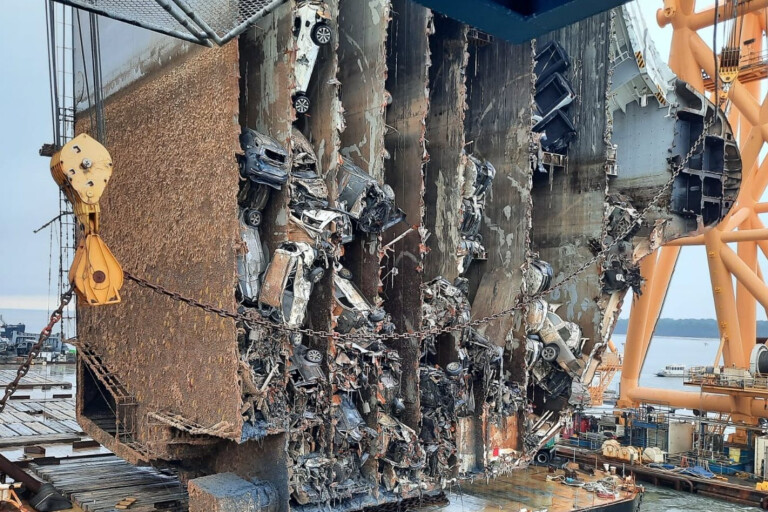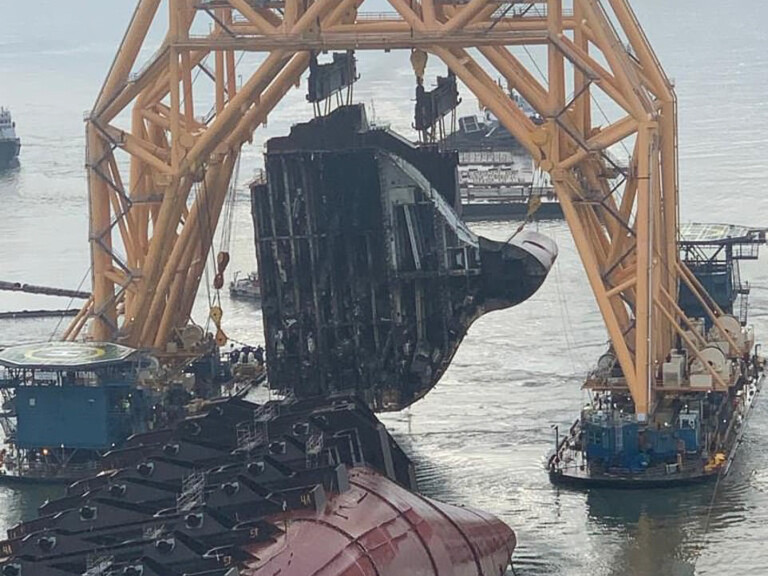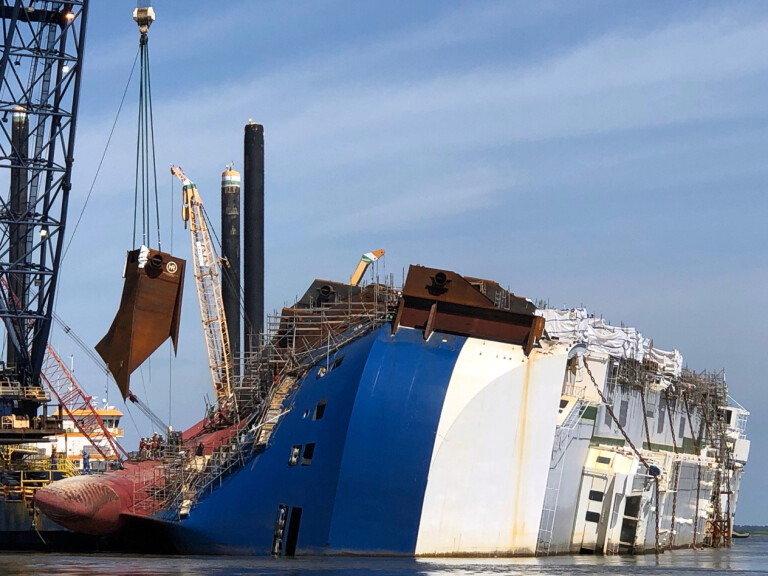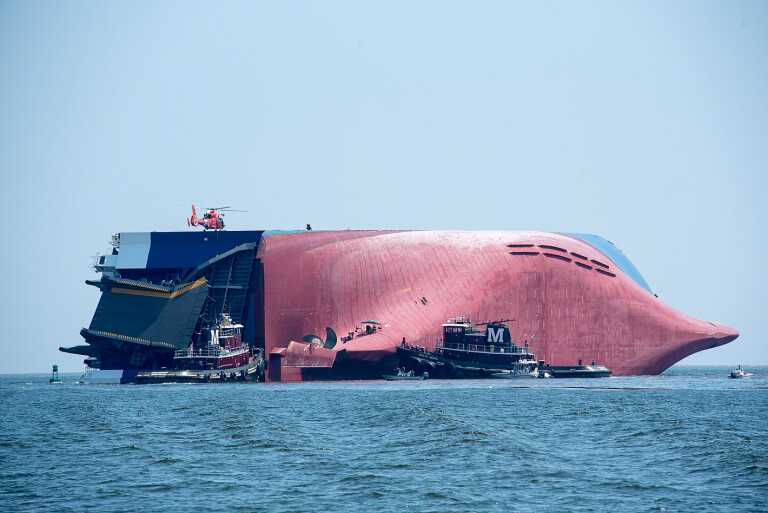
A literal boatload of brand-new Hyundais is finally being salvaged, months after it capsized in the US.
In what has to be the one of the coolest cross sections ever, a giant chain has been employed to dissect the MV Golden Ray, cutting the car carrier into manageable pieces in order to ship it away for processing and recycling.

It's an epic undertaking to behold, and incredibly complex in detail, but essentially the recovery effort involves a gigantic crane positioned over the capsized ship, which is used to slip a cutting chain underneath the hull of the ship.
The chain is then drawn back and forth, chopping right through the ship and its unfortunate automotive occupants.
It's a heck of a chain; it measures 120m in length, and its 36kg links are half a metre long each.
It's dragged through the hull at a rate of four metres a minute, and the noise is like the coming of the four horsemen of the Apocolypse.

From there, the individual pieces are lifted up by the crane and dropped onto special barges that deliver the pieces to a recycling facility in Louisiana.
The MV Golden Ray has been a persistent stain on Georgia’s horizon since September 2019, when it toppled en route to Maryland carrying a staggering 4200 Hyundai and Kia cars.
A fire is reportedly to blame for the freighter running aground and an uneven centre of gravity was ultimately the cause for the ship to roll onto its side.
While authorities continue to try and rescue what's left of the boat and its cargo, progress has been consistently hampered by both storms and the coronavirus pandemic.

The giant crane taking care of the salvage operation is named the VB-10000, and is a twin-gantry, dual-barge heavy-lift vessel designed to repair damaged oil rigs.
Each of the twin gantries is able to lift 5000 tonnes, though the entire vessel is limited to 7500 tonnes due to buoyancy limits.
That said, each section weighs between 2000 and 4000 tonnes - well within the VB-10000's limits.
As if the sheer engineering feat of dissecting a mammoth ship and moving in massive chunks wasn't challenging enough, it's currently lying in a hurricane hot-spot... and many of the salvage crew have contracted Covid-19.
As for the fate of the cars, they will all be written off, with the manufacturers able to claim the loss - estimated at a conservative $150 million - on insurance.
The ship itself, and its contents, will be able to be sold for scrap value.
While the Golden Ray's fuel was pumped off soon after it first capsized, thousands of litres of fuel remains in the tanks of the vehicles trapped in its hold, which is causing ongoing environmental concerns.
Fortunately, the capsized car carrier is under constant surveillance to sound the alarm if any spillage is detected and a containment and clean-up plan is in place should a significant leak occur.
While it's not ideal for the ship's owners and Hyundai, the salvage of the MV Golden Ray is certainly an awe-inspiring operation to behold.
COMMENTS